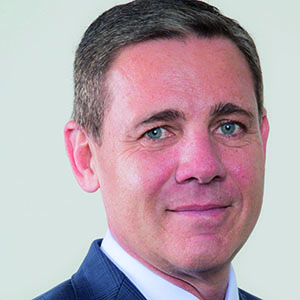Technology has played a significant role for SMSFs to date, mainly in the area of administration. Grant Abbott reveals how it is beginning to make a difference with fund strategy as well.
The year was 1999 and I was looking after the education content for the Financial Planning Association (FPA) conference in Sydney. In those days, the FPA conferences were huge with more than 2000 attendees and lots of ideas, technology and strategies every minute of the conference. I was lucky enough to be given the keynote speech on the topic of my choice and, as it was the tech era, I chose a forward-looking theme: “The Future of Financial Services in 2010”. As part of that brief, I took a trip to the United States to speak with fund managers, including State Street and Citibank, advisory firms such as Morningstar and venture capital organisations in Silicon Valley.
For those of you who can remember 1999, it was the dot-com era and filled with excitement over the wonder the internet would bring to everyday living. Yahoo, AOL, Amazon and a whole range of start-ups were filling the news every day with astronomical valuations. It was an exciting time and I even remember in 1998 doing Australia’s first-ever streaming financial services video, running at, can you believe this, 28 kilobits per second. It was horrible, but lots of fun.
Anyway, getting back to the story. The key takeaway from the trip was the consensus technology would dramatically change the way financial services were provided. The State Street crew, who developed the world’s first exchange-traded fund (ETF) in 1993, regarded low-cost ETFs as the way forward. Morningstar thought low-cost share trades would provide investors with the ability to do it themselves, thus decimating the broking industry. The Silicon Valley venture capital players believed the internet and technology would bring every fact, idea and piece of information to the fingertips of all, thereby disintermediating the information brokers.
They all pictured a new world where technology would make financial services bigger and more available to everyone. Opportunity for everyone.
Two decades later – a lot of changes
Here we are in 2019 and so much has changed. Who would have ever thought we could buy and sell shares, run a portfolio and access unlimited knowledge on our phones? No one, except maybe Steve Jobs.
The one thing our State Street friends got right and have done so well is the ETF market. Like most industries, advancing technology has impacted on funds management and none more so than the introduction of ETFs. With the likes of State Street there are some huge players in the market, including Vanguard, Fidelity and BlackRock. The money invested is in the US$ trillions and since the uptick in the market, the baby boomers and generation Xers have been piling in like nobody’s business, driving the US market ever higher. One in, all in. The same trend has happened here to a certain degree, but Australians still like to invest directly, although the favourite Telstra and bank trades have recently become less appealing.
But technology, a force for good, is also a killer. Last year, you may have seen this story:
Free Fidelity funds stoke price war in bid to catch index giants
Fidelity Investments, having lost billions of dollars in assets to rivals, pulled out some new ammunition to use against them – dropping fees to zero.
The move is part of an ongoing reckoning at Fidelity. The company, which built an empire on the prowess of its stock pickers, has been moving aggressively to fit into a world increasingly dominated by low-cost index products and exchange-traded funds. But it’s playing catch-up to Vanguard Group and BlackRock Inc.
So Fidelity unveiled two new index funds Wednesday to individual investors with a zero expense ratio, a move that roiled fellow asset managers. Fidelity may use the funds, as well as the other index products it reduced prices on, to attract investors to more profitable businesses such as financial advice and higher-priced active vehicles.
Source: Bloomberg, 2 August 2018.
Using free ETFs as a loss-leader to get on the Fidelity database where more fee-based services can be sold is very out there and we will see if it works. But we seem to be ever moving to a zero-cost base in terms of deliverables. Zero ETFs – who would have thought?
SMSFs and technology
Now the industry I love, SMSFs, is not immune to technological change and innovation. How could it be? On the SMSF administration side, advancing technology, including bank and other feeds, legal documentation at the touch of a button and index funds with very low fees, has led to a drop in the price of SMSF administration and maintenance. I remember in the mid-1990s when audit fees were in excess of $3000. The drop in administration and audit costs makes me question the Productivity Commission suggesting SMSFs need $1 million to make them feasible. It obviously hasn’t investigated the increasingly low-cost technology coming to SMSF administration.
I remember the Australian Securities and Investments Commission being asked (when it was determining the minimum assets required to set up an SMSF) what the dollar-amount entry point should be for an SMSF if the administration is free – say the member does it themselves or uses a service like www.mclowd.com.au, which then offered administration for free. Of course, nothing beats a professional using Class, BGL or SuperMate, and with their feeds and services getting better each year, value for money is skyrocketing. But the cost of administration and running funds is falling and there is always a new thing around the corner to provide more value and lower costs.

I have embraced RPA in a big way to solve the strategy problem. It has enabled me to engineer complex tax, legal and compliance strategies and processes for use by accounting and financial planning firms.
Grant Abbott
SMSFs and strategy
But one thing that can’t be replaced with technology yet is strategy, although I have seen some tax-based artificial intelligence programs that pore through hundreds of thousands of pages of laws, regulations, rulings and court cases to come up with a response to a strategic question. However, at this stage, with SMSFs and their more strategically challenging elder brother, the bloodline family SMSF, the human mind, coupled with creativity, can still deliver a great value-based strategy, one that can make a huge difference to a family in terms of multigenerational wealth creation, while providing a great revenue driver for the advising firm involved. A real win-win.
But the bones of a strategy can be hard. For example, many SMSF advisers have completed a related-party limited recourse borrowing arrangement (LRBA) in the past. And with the tax commissioner’s guide on the subject, Practical Compliance Guideline PCG 2016/5, and the new non-arm’s-length income laws, the strategy is simple, but putting it together is another thing. The related-party PCG 2016/5 LRBA has:
- A product disclosure statement.
- The tax commissioner’s guideline, PCG 2016/5, as a reference for compliance purposes.
- Trustee minutes upgrading the deed and authorising the acquisition of a single acquirable asset under a holding trust.
- SMSF deed upgrade plus minutes.
- Investment strategy covering asset and loan.
- Holding trust establishment plus minutes.
- Related-party loan.
- Mortgage deed.
- Personal guarantee (optional).
- Lease if asset to be used for rental income (optional).
I have to tell you a lot of strategies, whether a comprehensive estate plan or what to do when a member dies or commences a pension or transition-to-retirement income stream, are just as complex as the related-party LRBA. And to be truthful, that has been my failing in the past: getting advisers pumped and motivated about a strategy and then leaving them with no strategy or process to do the strategy. Frustrating for me and also the adviser. But no longer as I have seen the light.
The solution: robotic processing automation (RPA). RPA is here and now being used by large consulting firms and enterprises to reduce costs, increase compliance and deliver greater opportunities for human resources in a company or firm. It was a monster hit at Davos – the gathering for the global elite, who could see huge savings in costs (well, human costs through automation).
So what is RPA? Professor Leslie Willcocks of the London School of Economics, when speaking to McKinsey Consultants, described it this way: “RPA takes the robot out of the human. It deals with simple types of task. RPA takes away mainly physical tasks that don’t need knowledge, understanding or insight — the tasks that can be done by codifying rules and instructing the computer or the software to act.
“The major benefit we found in the 16 case studies we undertook is a return on investment that varies between 30 and as much as 200 per cent in the first year. But it’s wrong to look just at the short-term financial gains — particularly if those are simply a result of labour savings. That approach does not do justice to the power of the software because there are multiple business benefits.
“For example, companies in highly regulated industries such as insurance and banking are finding that automation is a cheap and fast way of applying superior capability to the problem of compliance. You also get better customer service because you’ve got more power in the process.”
I have embraced RPA in a big way to solve the strategy problem. It has enabled me to engineer complex tax, legal and compliance strategies and processes for use by accounting and financial planning firms. Once it gets working, you can automate any multi-step, complex small-to-medium enterprise (SME) and SMSF transactions and processes, such as raising SME capital, creating employee share plans, preparing sophisticated estate plans for founders and core employees, buying and selling property and other assets, accessing SMSF and family SMSF resources, and business planning techniques. If there is a process, system or interaction that an accountant has with their SME or SMSF client, in any way shape or form, RPA system engineers can automate the process using technology to ensure compliance, deliver unheard of time and human resource savings and provide legal sign-off where required, both to the process and documentation. No more wasting time and money by SME or SMSF clients on lawyers or inefficient accounting processes.
There is still a long way to go, but the related-party loan established in accordance with the tax commissioner’s PCG 2016/5 now takes less than 20 minutes to produce and build. Think how long it would be in a lawyer’s office and, let’s face it, online document providers fall short in a lot of the documentation above. I see a great future, here and now, for RPA in the financial services industry – decluttering the back office and enabling advisers or their juniors to build the strategy in super quick time.



